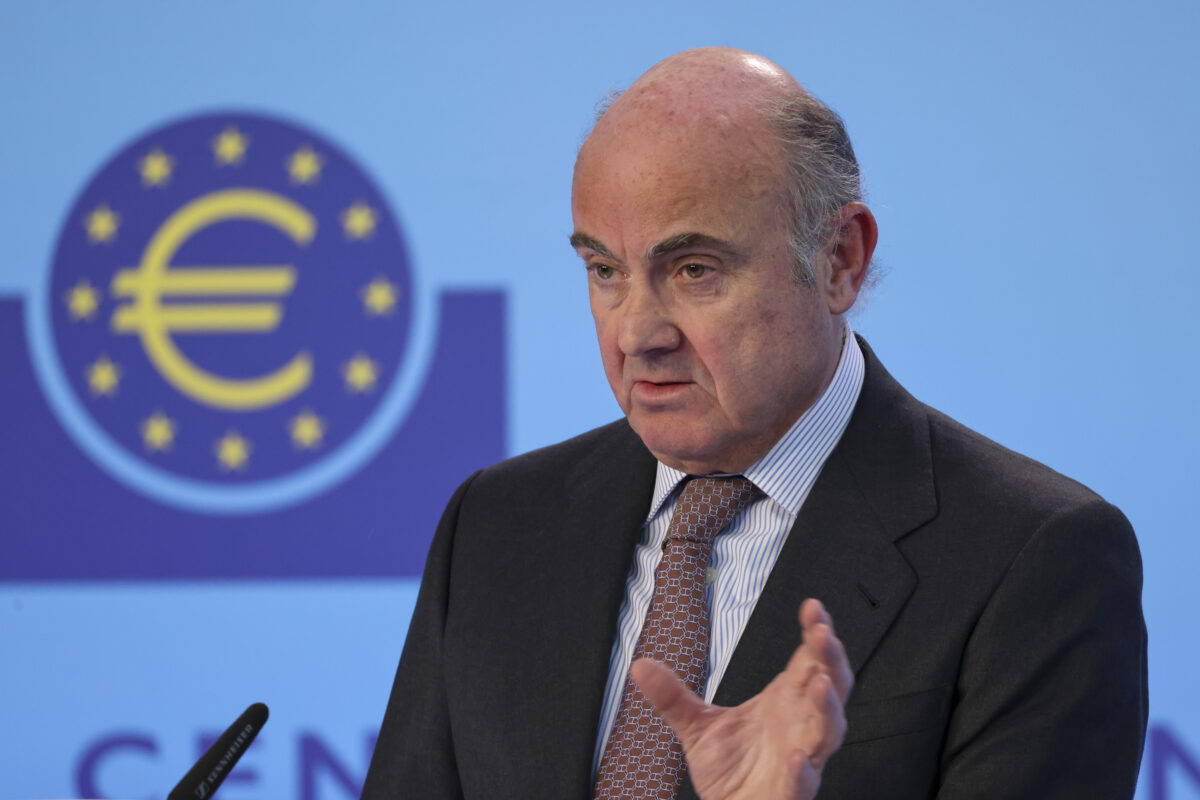Staff Review of the Economic Situation
The information reviewed for the July 26-27 meeting indicated that labor market conditions generally improved in June and that growth in real gross domestic product (GDP) was moderate in the second quarter. Consumer price inflation continued to run below the Committee’s longer-run objective of 2 percent, restrained in part by earlier decreases in energy prices and in prices of non-energy imports. Most survey-based measures of longer-run inflation expectations were little changed, on balance, while market-based measures of inflation compensation remained low.
Total nonfarm payroll employment increased briskly in June, but the increase for the second quarter as a whole was noticeably slower than in the first quarter. The unemployment rate rose to 4.9 percent in June, partly reversing its decline in the previous month. The labor force participation rate edged up in June, while the employment-to-population ratio edged down. The share of workers employed part time for economic reasons declined in June after a similarly sized increase in May. The rate of private-sector job openings declined in May, albeit from an elevated level, and the rates of hires and of quits were both unchanged. The four-week moving average of initial claims for unemployment insurance benefits remained low through mid-July. Average hourly earnings for all employees increased 2-1/2 percent over the 12 months ending in June.
The unemployment rates for African Americans and for Hispanics stayed above the rate for whites, although the differentials in jobless rates across the different groups were similar to those before the most recent recession. A similar pattern among demographic groups held for a broader measure of labor underutilization that also includes persons who were marginally attached to the labor force and those who were employed part time for economic reasons.
Total industrial production rose modestly, on net, in May and June, primarily reflecting an increase in the output of utilities in June related to unseasonably warm weather during that month. Manufacturing production was little changed, on balance, in May and June, and mining output edged up following a string of steep declines. Automakers‘ assembly schedules pointed to an increase in motor vehicle production during the third quarter, but other indicators of manufacturing production, such as new orders diffusion indexes from national and regional manufacturing surveys, suggested only modest gains in factory output over the next few months.
Growth in real personal consumption expenditures (PCE) appeared to have picked up in the second quarter. The components of the nominal retail sales data used by the Bureau of Economic Analysis to construct its estimate of PCE continued to rise at a solid pace in June. Although sales of light motor vehicles declined in June, the average pace for the second quarter as a whole was essentially the same as in the first quarter. The apparent pickup in real PCE growth was consistent with recent readings on key factors that influence consumer spending, including continued gains in real disposable personal income and in households‘ net worth. Also, consumer sentiment as measured by the University of Michigan Surveys of Consumers remained reasonably upbeat in the second quarter and in early July.
Recent information on housing activity suggested that the pace of the gradual recovery in the sector had slowed in recent months. Starts for new single-family homes were little changed, on average, in May and June at a level below that in the first quarter, while starts for multifamily units moved up, on net, and were above their first-quarter average. Building permit issuance for both single-family and multifamily units remained essentially flat in the second quarter and pointed to little improvement in the rate of starts over the next few months. Sales of new and existing homes both increased, on net, in May and June.
Real private expenditures for business equipment and intellectual property appeared to have declined for a third consecutive quarter. Nominal shipments of nondefense capital goods excluding aircraft decreased in May and June, and orders for these goods also declined on balance. However, recent readings from national and regional surveys of business conditions suggested some pickup in business equipment spending in the near term. Firms‘ nominal spending for nonresidential structures excluding drilling and mining declined in May. The number of oil and gas rigs in operation, an indicator of spending for structures in the drilling and mining sector, fell through late May but edged up through mid-July.
Nominal outlays for defense through June pointed to a decline in real federal government purchases in the second quarter. Real state and local government purchases also appeared to have declined. Although payrolls for state and local governments expanded over the quarter, nominal construction spending by these governments declined noticeably in April and May.
The U.S. international trade deficit widened in May, as imports rose and exports declined slightly. The export decline was led by decreased exports of capital goods and automotive products. For imports, increased imports of industrial supplies and consumer goods more than offset decreased imports of capital goods. These recent indicators, combined with data from earlier in the year, suggested that net exports made a near-neutral contribution to the growth of real GDP in the first half of 2016.
Total U.S. consumer prices, as measured by the PCE price index, increased about 1 percent over the 12 months ending in May, partly restrained by earlier declines in consumer energy prices. Core PCE price inflation, which excludes changes in food and energy prices, was a little above 1-1/2 percent over the same 12-month period, held down in part by decreases in the prices of non-energy imports over much of this period and the pass-through of the declines in energy prices to the prices of other goods and services. Over the 12 months ending in June, total consumer prices as measured by the consumer price index (CPI) rose 1 percent, while core CPI inflation was about 2-1/4 percent. The Michigan survey measure of longer-run inflation expectations edged up in June and was unchanged in early July. Other measures of longer-run inflation expectations–including those from the Desk’s Survey of Primary Dealers and Survey of Market Participants–were generally little changed, on balance, in recent months.
The pace of foreign real GDP growth appeared to slow in the second quarter, driven in large part by temporary factors such as wildfires in Canada and, to a lesser extent, by a deceleration of activity in the euro area. In the emerging market economies (EMEs), a pickup in growth in China in the second quarter, supported by policy stimulus, appeared to be more than offset by slower growth in Latin America. In the United Kingdom, early indicators following the June 23 referendum on exit from the EU („Brexit“) pointed to a slowdown in economic growth. Inflation in the AFEs picked up in the second quarter, largely reflecting some increase in energy prices, but generally remained low. Inflation also remained subdued in the EMEs.
Staff Review of the Financial Situation
Domestic financial conditions remained accommodative over the intermeeting period. Equity price indexes increased, on net, despite an initial sharp decline following the Brexit vote, and corporate bond spreads declined on balance. Conditions in business and consumer credit markets were about unchanged. The expected policy path of the federal funds rate implied by market quotes was little changed, on net, but fluctuated notably over the intermeeting period.
In the days immediately following the Brexit vote, asset prices were volatile, and some financial markets, particularly certain foreign exchange markets, experienced brief periods of strained liquidity. Global stock indexes fell notably, credit spreads widened, and safe-haven assets appreciated substantially. However, broad-based market dislocations did not develop, apparently because market participants had prepared for a significant risk event. Market analysts also pointed to the communications and actions by advanced-economy authorities both before and after the vote as helping to reassure investors. Overall, negative sentiment surrounding the Brexit outcome early in the intermeeting period was subsequently alleviated by expectations for greater policy accommodation in some AFEs, some resolution of near-term political uncertainty in the United Kingdom, and positive U.S. economic data releases. Nevertheless, several longer-term global risks related to Brexit remained.
Federal Reserve communications released in conjunction with the June FOMC meeting were interpreted by market participants as more accommodative than expected. The expected path of the federal funds rate implied by market quotes declined in response to the release of forecasts collected for the June Summary of Economic Projections, which showed larger-than-expected downward revisions to projections of the federal funds rate. The expected policy path implied by market quotes fell further in the aftermath of the Brexit vote, but it later retraced most of the earlier declines, supported by better-than-expected domestic data releases–particularly the employment and retail sales reports for June–as well as improved sentiment regarding the possible near-term implications of Brexit. The median respondents to the Desk’s Survey of Primary Dealers and Survey of Market Participants saw one rate hike in 2016 as most likely, the same as in the June surveys.
The nominal Treasury yield curve flattened slightly, on net, over the intermeeting period. Longer-term nominal Treasury yields fell sharply in the two weeks following the Brexit vote. Market participants attributed the decline in Treasury yields to a variety of factors, including expectations for a more accommodative stance of monetary policy by major central banks; an intensification of demand for safe-haven assets immediately following the Brexit vote; and strong demand by global institutional investors for higher-yielding U.S. fixed-income assets following decreases in sovereign yields in Europe and Japan, in some cases further into negative territory. Most of the decline in nominal Treasury yields was reversed later in the period. The small net decline in longer-term nominal Treasury yields over the period was attributable to a comparable drop in real yields, as longer-term inflation compensation measures based on Treasury Inflation-Protected Securities and inflation swaps were little changed on net. Spreads of yields on agency mortgage-backed securities over yields on Treasury securities narrowed slightly.
Broad stock price indexes increased, on net, over the intermeeting period. One-month-ahead option-implied volatility on the S&P 500 index–the VIX–fell, returning to the lower end of its distribution of the past few years. U.S. bank stock prices dropped sharply after the Brexit vote but then retraced that decrease, buoyed by better-than-expected earnings reports from some of the largest domestic banks. Declines in European bank stock prices following the Brexit vote also reversed later in the intermeeting period. Spreads of yields on investment-grade corporate bonds over those on comparable-maturity Treasury securities ended the period somewhat lower, on net, and spreads on speculative-grade corporate bonds declined notably. Near-term forward spreads on speculative-grade issues dropped substantially more than their far-term forward counterparts, suggesting that the overall decline in speculative-grade spreads was due in part to a less negative credit outlook and not just an increase in investors‘ risk appetite.
Overall financing conditions for nonfinancial firms remained accommodative. Gross issuance of corporate bonds stayed robust in June, particularly in the investment-grade sector. Issuance slowed significantly in early July for both investment- and speculative-grade bonds, in part reflecting seasonal factors. The growth of commercial and industrial (C&I) lending on banks‘ books slowed in June, but expansion of such loans continued through early July. This pattern was consistent with the responses to the July 2016 Senior Loan Officer Opinion Survey on Bank Lending Practices (SLOOS), in which modest net fractions of respondents indicated that they had tightened their C&I lending standards and experienced weaker demand for such loans during the second quarter.
On balance, the credit quality of nonfinancial corporations continued to weaken in recent months, although some indicators suggested that the pace of deterioration was subsiding. The net volume of bonds downgraded in the second quarter was notably smaller than in the previous quarter. Even so, default rates on bonds issued by nonfinancial corporations and expected year-ahead default rates for nonfinancial firms both remained elevated relative to the ranges that typically prevail during expansions.
Financing conditions for commercial real estate (CRE) stayed fairly accommodative, on balance, and bank lending in all major CRE categories was strong through June. Spreads on U.S. commercial mortgage-backed securities (CMBS) did not appear to have been affected by the Brexit vote. They remained elevated, however, a factor that likely contributed to depressed CMBS issuance so far this year. Meanwhile, CMBS delinquency rates edged up for the third consecutive month. A significant net fraction of respondents to the July SLOOS indicated that, during the second quarter, they had tightened their CRE lending standards for construction and land development loans and loans secured by multifamily residential properties, and a moderate net fraction of respondents reported tightening their lending standards for loans secured by nonfarm nonresidential properties.
Credit conditions in municipal bond markets remained solid. Gross issuance of municipal bonds in June was strong, credit quality continued to be stable overall, and the ratio of yields on general obligation bonds to those on comparable-maturity Treasury securities was little changed on net. The default by Puerto Rico and the downgrade of the general obligation bonds of Illinois both appeared to have only a limited effect on the broader municipal bond market.
Financing conditions in the residential mortgage market became more accommodative, on balance, since the June FOMC meeting. Interest rates on 30-year fixed-rate mortgages decreased further, partly reflecting the declines in yields on Treasury securities. A number of large banks noted in the July SLOOS an easing of standards for home-purchase loans eligible for purchase by the government-sponsored enterprises (GSEs). Banks also reported a broad-based pickup in demand across most major categories of home-purchase loans. Indicators suggested a pickup in refinancing activity in response to the drop in mortgage rates.
Financing conditions in consumer credit markets were little changed and remained largely accommodative against a backdrop of stable credit performance across debt categories. Growth of auto loans remained robust even though a modest net fraction of respondents to the July SLOOS indicated that they had tightened their standards for such loans. Credit card balances continued to grow moderately on balance. Yield spreads for securities backed by credit card and auto loans over Treasury securities remained largely stable, and market participants reportedly expected asset-backed security issuance to pick up in the coming weeks.
As in the United States, global financial market developments during the intermeeting period were driven, in large part, by reactions to the U.K. referendum on EU membership on June 23 and to the release of U.S. economic data. Immediately after the Brexit vote, the British pound depreciated sharply against other major currencies, while the U.S. dollar and the Japanese yen strengthened on what appeared to be safe-haven flows. Prices of risky assets and advanced-economy bond yields also fell in response to the heightened uncertainty and expectations of slower economic growth. Later in the period, however, investors‘ concerns eased substantially on the resolution of some of the near-term political uncertainty in the United Kingdom, increased expectations for additional policy stimulus in Europe and Japan, and U.S. data on employment and retail sales in June that exceeded market expectations. Some AFE sovereign yields recovered partially from their post-Brexit lows, but U.K. long-term yields remained low on expectations of slower growth there and further monetary policy accommodation. Global equity indexes ended higher, on net, over the intermeeting period. However, European bank equities, especially those of Italian banks, underperformed, reflecting investor fears that lower interest rates will continue to weigh on profitability. Emerging market asset prices were generally resilient over the intermeeting period; the dollar was weaker against most emerging market currencies, and flows into emerging market assets surged. Although the Chinese renminbi depreciated against both the U.S. dollar and the broader currency basket referenced by the Chinese government, this development elicited little market reaction. The unsuccessful coup attempt in Turkey on July 15 left little imprint on global financial markets.
In its latest report on potential risks to the stability of the U.S. financial system, the staff continued to judge that vulnerabilities overall remained at a moderate level and noted that the financial system had been resilient to the Brexit vote. While vulnerabilities stemming from financial-sector leverage were assessed as still low, those from maturity and liquidity transformation were judged by the staff to be somewhat higher in the near term than in the previous assessment. Although upcoming regulatory changes were expected to improve the stability of money market funds in the longer run, the staff noted the potential for large withdrawals by investors in anticipation of those changes to lead to some disruptions in the short run. Vulnerabilities emanating from leverage in the nonfinancial private sector remained moderate: While business debt ratios stayed elevated, household debt-to-income ratios continued to inch down. Valuation pressures also remained at a moderate level. Although term premiums on Treasury securities became more deeply negative and CRE valuation pressures remained appreciable, corporate bond and equity risk premiums were unchanged on net.
Staff Economic Outlook
In the U.S. economic projection prepared by the staff for the July FOMC meeting, real GDP growth was estimated to have picked up in the second quarter, consistent with the forecast in June. However, the projected step-up in real GDP growth over the second half of this year was marked down a little, partly reflecting softer news on construction. The forecast for real GDP growth in 2017 and 2018 was little revised, as the positive effects of a slightly lower assumed path for interest rates and a stronger trajectory for household wealth were mostly offset by the restraint from a weaker outlook for foreign GDP growth and a slightly stronger path for the foreign exchange value of the dollar. The staff continued to forecast that real GDP would expand at a modestly faster pace than potential output in 2016 through 2018, supported primarily by increases in consumer spending and, to a lesser degree, by a projected pickup in business and residential investment. The unemployment rate was expected to remain flat over the second half of this year and then to gradually decline through the end of 2018. Over this period, the unemployment rate was projected to run somewhat below the staff’s estimate of its longer-run natural rate.
The staff’s forecast for consumer price inflation over the second half of 2016 was a little lower than in the previous projection, as recent declines in crude oil prices were expected to hold down consumer energy prices. Thereafter, the forecast for inflation was essentially unrevised. The staff continued to project that inflation would increase over the next several years, as energy prices and the prices of non-energy imports were expected to begin steadily rising this year and as resource utilization was expected to tighten further. However, inflation was still projected to be slightly below the Committee’s longer-run objective of 2 percent in 2018.
The staff viewed the uncertainty around its July projections for real GDP growth, the unemployment rate, and inflation as similar to the average of the past 20 years. The risks to the forecast for real GDP were seen as tilted to the downside, reflecting the staff’s assessment that both monetary and fiscal policy appeared to be better positioned to offset large positive shocks than adverse ones. In addition, the staff continued to see the risks to the forecast from developments abroad as skewed to the downside. Consistent with the downside risks to aggregate demand, the staff viewed the risks to its outlook for the unemployment rate as tilted to the upside. The risks to the projection for inflation were still judged as weighted to the downside, reflecting the possibility that longer-term inflation expectations may have edged lower.
Participants‘ Views on Current Conditions and the Economic Outlook
In their discussion of the economic situation and the outlook, meeting participants agreed that the information received over the intermeeting period indicated that the labor market had strengthened and that economic activity had been expanding at a moderate rate. Job gains were strong in June following weak growth in May. On balance, payrolls and other labor market indicators pointed to some increase in labor utilization in recent months. Household spending had been growing strongly, but business fixed investment had been soft. Inflation had continued to run below the Committee’s 2 percent longer-run objective, partly reflecting earlier declines in energy prices and in prices of non-energy imports. Market-based measures of inflation compensation remained low; most survey-based measures of longer-run inflation expectations were little changed, on balance, in recent months. Domestic and global asset prices were volatile early in the intermeeting period following the vote by the United Kingdom to leave the EU, but they subsequently recovered their earlier declines, and, on net, U.S. financial conditions eased over the intermeeting period.
Participants generally indicated that their economic forecasts had changed little over the intermeeting period. They continued to anticipate that, with gradual adjustments in the stance of monetary policy, economic activity would expand at a moderate pace and labor market indicators would strengthen. Inflation was expected to remain low in the near term, in part because of earlier declines in energy prices, but to rise to 2 percent over the medium term as the transitory effects of past declines in energy and import prices dissipated and the labor market strengthened further. Participants viewed the near-term risks to the U.S. economic outlook as having diminished. However, some noted that the Brexit vote had created uncertainty about the medium- to longer-run outlook for foreign economies that could affect economic and financial conditions in the United States. Participants generally agreed that the Committee should continue to closely monitor inflation indicators and global economic and financial developments.
Growth in consumer spending was estimated to have rebounded in the second quarter from the slow pace in the first quarter, as monthly gains in retail sales were strong through June. Sales of new motor vehicles remained at a high level, on average, in the second quarter, although sales appeared to be supported by substantial incentives for consumers and by business fleet purchases. With the second-quarter pickup in spending, real PCE appeared to have risen over the first half of the year at a rate consistent with the positive trends in fundamental determinants of household spending. Participants cited a number of factors that had likely been supporting household spending, including solid real income growth, gains in house and equity values, low gasoline prices, and favorable levels of consumer confidence.
Residential investment posted a strong increase in the first quarter of the year, but data on starts of new single-family homes indicated that outlays likely edged down in the second quarter. Data on permit issuance through June suggested that new-home building activity might rise only slowly in the near term. However, participants commented on a number of factors suggesting that the housing sector was likely to continue to improve, albeit gradually: Rising sales of existing homes, responses to the July SLOOS pointing to stronger demand for residential mortgage loans, and the steady increase in house prices were seen as evidence of rising demand. In addition, credit conditions remained favorable: Mortgage rates had fallen further, and the SLOOS reported easier terms for loans eligible for purchase by the GSEs. Moreover, several participants noted positive reports on residential construction activity from business contacts in their Districts, with a few suggesting that shortages of lots and skilled labor, rather than low demand, might be contributing to the recent slowing.
Business fixed investment appeared to have declined further during the second quarter, with broad-based weakness in equipment and another steep drop in drilling and mining structures. Participants noted that the recent rise in energy prices had spurred an uptick in drilling activity, suggesting that if energy prices firm over time as expected, the drag on investment from declining energy-sector activity should diminish. In addition, it was pointed out that the upward trend in investment in intellectual property products was a positive in the outlook for investment. Several participants commented on favorable reports from their business contacts on commercial construction. Based on conversations with their contacts, participants discussed a number of factors that may have been contributing to businesses‘ cautious approach to investment spending, including concern about the likelihood of an extended period of slow economic growth, both in the United States and abroad; narrowing profit margins; and uncertainty about prospects for government policies.
In their discussion of business conditions in their Districts, many participants reported that their contacts anticipated that the U.K. referendum would have little effect on their businesses. Activity in the manufacturing sector continued to be mixed: Several participants indicated that manufacturing in their Districts was still quite weak, while several others reported that their Banks‘ June surveys showed that manufacturing activity had picked up or stabilized. The available surveys indicated that service-sector activity continued to expand. However, economic activity continued to be depressed in areas affected by the downturn in the energy sector and falling agricultural commodity prices, although several participants noted that the recent firming in crude oil prices had led to a modest increase in drilling activity. Businesses in the energy industry were reported to be highly leveraged, and additional restructurings and bankruptcies were seen as likely. Farm loans continued to increase, and banks had seen some rise in delinquencies on such credits.
The labor market report for June appeared to confirm participants‘ earlier assessments that the small gain in payroll employment in May likely had substantially understated its underlying pace. The sharp rebound in payroll employment gains put the average monthly increase in jobs over the three months ending in June at about 150,000. Although this pace was noticeably slower than the average rate during 2015 and the first quarter of 2016, many participants viewed it as consistent with continued strengthening in labor market conditions and with a further gradual decline in the unemployment rate. The unemployment rate rose in June after having declined in May, but the labor force participation rate ticked up, the rate of involuntary part-time employment more than reversed its increase in May, and the broader U-6 measure of labor underutilization continued to move down. Some participants noted that recent signs of a moderate step-up in wage increases provided further evidence of improving labor market conditions. Although most participants judged that labor market conditions were at or approaching those consistent with maximum employment, their views on the implications for progress on the Committee’s policy objectives varied. Some of them believed that a convergence to a more moderate, sustainable pace of job gains would soon be necessary to prevent an unwanted increase in inflationary pressures. Other participants continued to judge that labor utilization remained below that consistent with the Committee’s maximum-employment objective. These participants noted that progress in reducing slack in the labor market had slowed, citing relatively little change, on net, since the beginning of the year in the unemployment rate, the number of persons working part time for economic reasons, the employment-to-population ratio, labor force participation, or rates of job openings and quits.
Available information on inflation suggested that the change in headline PCE prices for the 12 months ending in June continued to run well below the Committee’s longer-run objective and that the 12-month change in core PCE prices likely remained near its May level of 1.6 percent. On a 12-month-change basis, core PCE inflation had risen from 1.3 percent a year earlier, but it continued to be held down by the pass-through of earlier declines in energy prices and by soft prices of imports. Core PCE inflation over the first half of 2016 was expected to have been close to an annual rate of 2 percent, but it was noted that some of the increase likely reflected transitory effects that would be in part reversed during the second half of the year. Longer-run inflation expectations, as reported in the Michigan survey, were little changed in June and early July. The reading from the Federal Reserve Bank of New York’s Survey of Consumer Expectations for inflation three years ahead moved up further in June, returning to near its level of a year earlier. Most market-based measures of longer-run inflation compensation remained low.
Participants also discussed recent developments in financial markets and issues related to financial stability. The vote by the United Kingdom to leave the EU led to sharp declines in risk asset prices and a spike in volatility in financial markets early in the intermeeting period. But those price moves were subsequently reversed, likely in response to expectations for policy actions by some major central banks, the resolution of some of the political uncertainty in the United Kingdom, and better-than-expected data on U.S. economic activity. Financial markets and institutions were generally resilient in the aftermath of the vote, apparently reflecting in part advance preparations by key market participants and communications from advanced-economy central banks before and after the vote that they would take the steps necessary to provide liquidity to support the orderly functioning of markets. Overall, U.S. financial conditions eased during the intermeeting period: Major equity indexes rose, longer-term interest rates fell, credit spreads narrowed, and the broad index of the foreign exchange value of the dollar was little changed.
In the discussion of developments related to financial stability, it was noted that while the capital and liquidity positions of U.S. banks remained strong, European banks, particularly Italian banks, were under pressure–as evidenced by the sharp declines in their equity prices–from a weaker economic outlook for that region, thin interest margins, and concerns about the quality of their loan portfolios. In U.S. markets, overall financial vulnerabilities were judged to remain moderate, as nonfinancial debt had continued to increase roughly in line with nominal GDP and valuation pressures were not widespread. However, during the discussion, several participants commented on a few developments, including potential overvaluation in the market for CRE, the elevated level of equity values relative to expected earnings, and the incentives for investors to reach for yield in an environment of continued low interest rates. Regarding CRE, it was noted that the recent SLOOS reported that a significant fraction of banks tightened lending standards in the first and second quarters of the year and that overvaluation did not appear to be widespread across markets. It was also pointed out that investors potentially were becoming more comfortable locking in current yields in an environment in which low interest rates were expected to persist, rather than engaging in the type of speculative behavior that could pose financial stability concerns.
Participants discussed the implications of recent economic and financial developments for the economic outlook and the risks attending the outlook. They indicated that their forecasts for economic growth, the labor market, and inflation had changed little over the intermeeting period. Regarding the near-term outlook, participants generally agreed that the prompt recovery in financial markets following the Brexit vote and the pickup in job gains in June had alleviated two key uncertainties about the outlook that they had faced at the June meeting. Brexit now appeared likely to have little effect on the U.S. economic outlook in the near term. Moreover, the employment report for June, along with other recent information that suggested that real GDP rose at a moderate rate in the second quarter, provided some reassurance that a sharp slowdown in employment and economic activity was not under way. Participants judged that the incoming information, on the whole, had lowered the downside risks to the near-term economic outlook. Most participants anticipated that economic growth would move up to a rate somewhat above its longer-run trend during the second half of 2016 and that the labor market would strengthen further. However, several noted that while the outlook for consumer spending remained positive, continued weakness in business investment and the possibility of slower improvement in the housing sector posed some downside risks to their forecasts.
Although the near-term risks to the outlook associated with Brexit had diminished over the intermeeting period, participants generally agreed that they should continue to closely monitor economic and financial developments abroad. As a consequence of Brexit, economic growth in the United Kingdom and, to a lesser extent, in the euro area would likely be slower than previously anticipated. Moreover, the exit process was expected to entail an extended period of negotiations that, in the view of most participants, had the potential to increase the political and economic uncertainties in that region; several also saw the possibility that complications during the exit process could result in spells of elevated volatility in global financial markets. Some participants noted that the weak capital positions and high levels of nonperforming loans at some European banks could also weigh on economic growth in the region. In addition to the situation in Europe, some participants continued to see a number of other downside risks to the medium-term economic and financial outlook from abroad, including weakness in the global economy more broadly, uncertainty about the outlook for China’s foreign exchange policy, and the implications of China’s run-up in debt to support its economy. A few others noted uncertainty about the strength of domestic economic activity going forward. However, some other participants indicated that they did not view the uncertainties attending the outlook to be unusually elevated and continued to see the risks to their economic forecasts as balanced.
In discussing the outlook for the labor market, most participants viewed some further strengthening in labor market indicators as consistent with achieving the Committee’s maximum-employment objective. With inflation still below the Committee’s longer-run objective and likely to continue to respond only slowly to somewhat tighter labor markets, most also saw relatively low risk that a further gradual strengthening of the labor market would generate an unwanted increase in inflationary pressures. Nevertheless, a few participants continued to caution about the risks to the inflation outlook from overshooting the natural rate of unemployment. Some indicated that a step-down in monthly job gains seemed appropriate as labor market conditions approached those consistent with the Committee’s maximum-employment objective and that a more moderate pace of hiring could still be consistent with further increases in labor utilization. However, several others were concerned that if labor market slack diminished more slowly than they had previously anticipated, progress on the Committee’s maximum-employment and inflation objectives could be delayed.
Regarding the outlook for inflation, incoming information appeared to be broadly in line with most participants‘ earlier expectations that inflation would gradually rise to 2 percent over the medium term. Most noted that the firming in various indicators of core inflation over the past year, together with signs that the direct and indirect effects of earlier declines in energy prices and prices of non-oil imports had begun to fade, provided support for their forecasts. Several added that recent indications of a pickup in wage increases were evidence of the effect of tightening resource utilization. However, other participants expressed greater uncertainty about the trajectory of inflation. They saw little evidence that inflation was responding much to higher levels of resource utilization and suggested that the natural rate of unemployment, and the responsiveness of inflation to labor market conditions, may be lower than most current estimates. Several viewed the risks to their inflation forecasts as weighted to the downside, particularly in light of the still-low level of measures of longer-run inflation expectations and inflation compensation and the likelihood that disinflationary pressures from abroad would persist.
Against the backdrop of their views of the economic outlook, participants discussed the conditions that could warrant taking another step in removing monetary policy accommodation. With inflation continuing to run below the Committee’s 2 percent objective, many judged that it was appropriate to wait for additional information that would allow them to evaluate the underlying momentum in economic activity and the labor market and whether inflation was continuing to rise gradually to 2 percent as expected. Several suggested that the Committee would likely have ample time to react if inflation rose more quickly than they currently anticipated, and they preferred to defer another increase in the federal funds rate until they were more confident that inflation was moving closer to 2 percent on a sustained basis. In addition, although near-term downside risks to the outlook had diminished over the intermeeting period, some participants stressed that the Committee needed to consider the constraints on the conduct of monetary policy associated with proximity to the effective lower bound on short-term interest rates. These participants concluded that the Committee should wait to take another step in removing accommodation until the data on economic activity provided a greater level of confidence that economic growth was strong enough to withstand a possible downward shock to demand. However, some other participants viewed recent economic developments as indicating that labor market conditions were at or close to those consistent with maximum employment and expected that the recent progress in reaching the Committee’s inflation objective would continue, even with further steps to gradually remove monetary policy accommodation. Given their economic outlook, they judged that another increase in the federal funds rate was or would soon be warranted, with a couple of them advocating an increase at this meeting. A few participants pointed out that various benchmarks for assessing the appropriate stance of monetary policy supported taking another step in removing policy accommodation. A few also emphasized the risk to the economic expansion that would be associated with allowing labor market conditions to tighten to an extent that could lead to an unwanted buildup of inflation pressures and thus eventually require a rapid increase in the federal funds rate. In addition, several expressed concern that an extended period of low interest rates risked intensifying incentives for investors to reach for yield and could lead to the misallocation of capital and mispricing of risk, with possible adverse consequences for financial stability.
Kommentare lesen und schreiben, hier klicken












